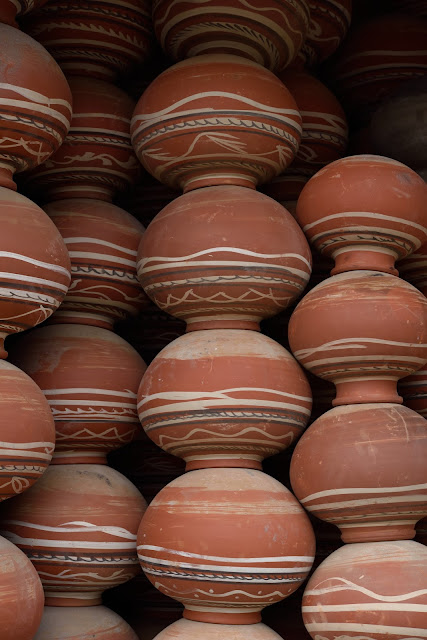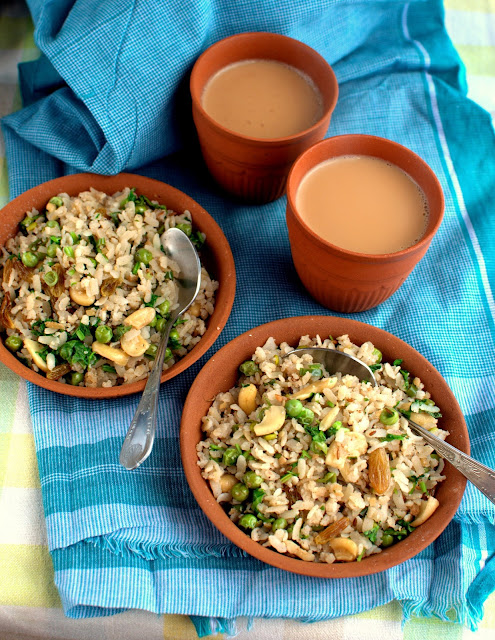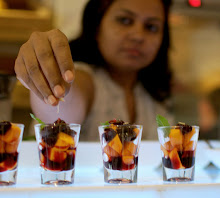We get very few opportunities to learn from maestros. Learning about
a cuisine considered as awe inspiring as Kashmiri is an opportunity I can't miss.
Kashmiri cuisine has been awe inspiring for
me always. I love the Khatte Baingan, Haakh, Gogji Nadur, Chaman Kaliya and the
likes, have been cooking these home style Kashmiri recipes for long but had
never experienced a Wazawan.
Wazawan is the Kashmiri wedding feast that is supposed to be
the ultimate gluttony of the highest order. The Kashmiri Waza is the professional
chef who cooks for such Wazawan and he is considered an artist in his own
right. The fine art of choosing the meat cuts, giving it the right treatment
before cooking and shaping the perfect Moche, Rista and Goshtaba, slow cooking the Tabak maaz perfectly after poaching them in stock is the art
that brings accolades to a professional Waza in Kashmir or even outside
Kashmir.
So when the much acclaimed food critique Marryam Reshii
hosted us for a Kashmiri dinner at Le Meridien Gurgaon, it was a blissful
experience to taste and learn from her and Waza Rashid who had been flown in
from Srinagar to prepare the feast. It is worth mentioning that Marryam is
married to a Kashmiri Muslim and Kashmir is her second home for the last 25
years, possibly more than that as she had been working on Kashmir issues much
before that.
This hand crafted authentic Kashmiri dinner at Latest Recipe, the
all day dining restaurant at Le Meridien Gurgaon, was indeed a great learning
experience when Waza Rashid cooked food and Marryam Reshii gave her inputs in every
possible way. Both of them answered our queries patiently and I found myself
getting educated about the finer nuances. Imagine someone who couldn’t
differentiate between a Rista and Goshtaba till recently, learning about Butt
Haaq and Waza Haaq at the Kashmiri cuisine showcase. Butt Haaq by the way is the Kashmiri haaq greens cooked the Hindu way and Waza Haaq is the same greens cooked the Muslim way, often with mutton liver.
The dinner started with a few exquisite chutneys. Pumpkin, Zereshk,
Walnut and Radish chutneys were delicious and one could keep on licking them by
spoonfuls if the starters did not arrive. The starters were served in quick
succession and we found our plates loaded with Tabak Maaz, Seekh Kabab, Nadru
ki Tikki, Haaq ki tikki and Waza Chicken. I liked Haaq ki Tikki more than Nadru
Tikki, Waza Chicken was good too but the show stopper for me was the Tabak
Maaz.
The slow cooked Tabak maaz was crisp like a cracker on the
outside and glutinous soft inside, subtly flavored and perfectly meaty. Waza
Rashid informed later when I asked that the Tabak Maaz is made with larger chunks
of side ribs when made for traditional Tarami platters and stays moister inside.
Tarami is a
huge copper platter that serves four people together during Wazawan. To make
the experience more realistic we were served the Tarami platter, a ceramic platter in this case, to be shared between
the two of us and how we loved it.
The Tarami platter came with plain rice and a pulao served
on two sides. The rice was topped with Rista, Gushtaba, Aab Gosht, Alubukhara
Korma, Murgh Dhaniya Korma, Kishmish Korma and the Moche kabab. I shall talk
about my favorites from this Tarami platter and there were too many of them.
The subtle and light Aab Gosht, that is a meat dish cooked with milk was a fine example of
how a dish need not be rich to taste great. The Goshtaba which is a very smooth
meatball cooked in a milky gravy was perfectly done and oh so juicy and
flavourful. Aromatic Kashmiri spice mixes exude a very subtle but potent aroma
of fennel, green cardamom, Cloves, Caraway and saffron in such curries.
The Alu Bukhara
korma was pleasantly tart and delicious. Kishmish Korma made me crave for it
but I had to stop myself from taking second helpings else I wouldn’t have been
able to taste the other delicious offerings on this menu. Moche Kabab was a fist
shaped kabab sprinkled with almond flakes, very flavourful, moist and slightly
spongy.
The way the meat is pounded for these kababs and meatballs, the way the
fat is added while pounding and the portions of the animal used makes a
difference in taste and texture in these fine specimens of different cooking techniques.
This is where a Waza proves his skills.
The dessert was a Phirni with nuts and saffron, with
generous lashings of coconut to my surprise. Nicely made and delicious but Kashmir is not
known for the desserts as much I know. The Qahva arrived to sum up the
wonderful meal and wrapped us with its warmth and the aroma of saffron.
Waza Rashid kept telling us how he has introduced some vegetarian kababs and some innovative vegetarian dishes to suit the taste buds of people outside Kashmir but there used to be a fixed menu for the traditional Wazawan earlier. He told us about the different types of Dum Alu that is made during Wazawan and how interesting pickles are made with almost everything in Kashmir.
I reserved my stupid questions about the Ver masala, sun dried vegetables and how they are cooked for Marryam as she is a patient listener and a sweet soul who never gets tired of talking about food, that too her favorite cuisine that is cooked everyday at her home. I told you I came back with some value addition to my food knowledge.
This special hand crafted authentic Kashmiri cuisine prepared by Waza Rashid is available at latest Recipe, the all day dining restaurant at Le Meridien Gurgaon till February 29th. Please go if you want great tasting food and some enlightenment on Kashmiri cuisine.
Please forgive me for the lack of pictures, the ones shared here are the cellphone pictures I clicked that day. There are a few
technical issues with my desktop and I can’t edit and upload pictures for a while. I will
rectify it as soon as possible and will update this post with all the pictures
I have clicked with my camera. Stay tuned.































